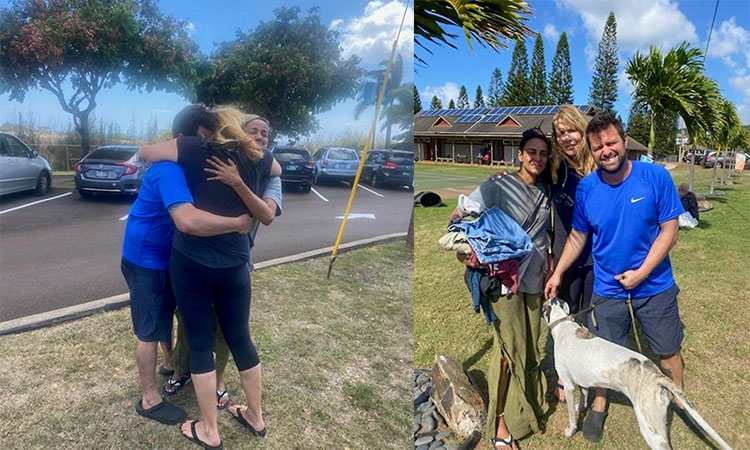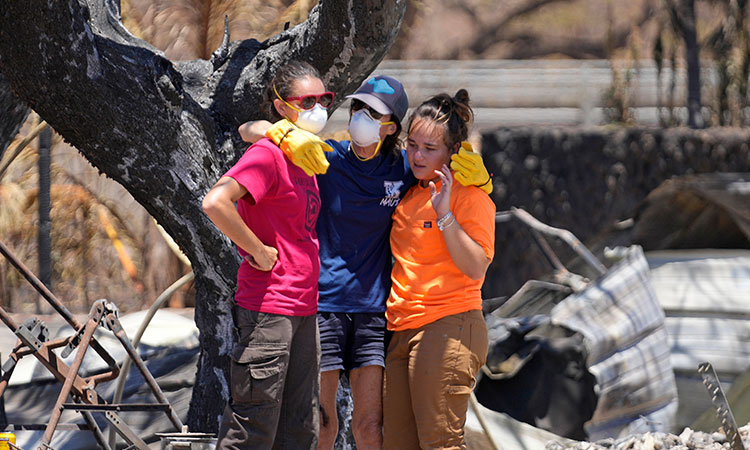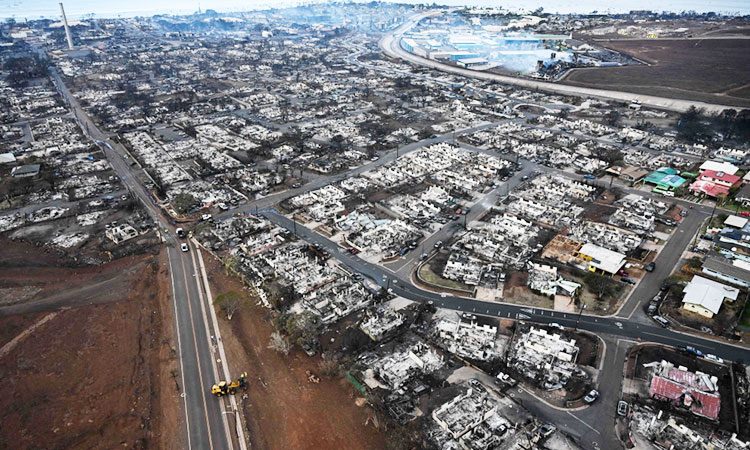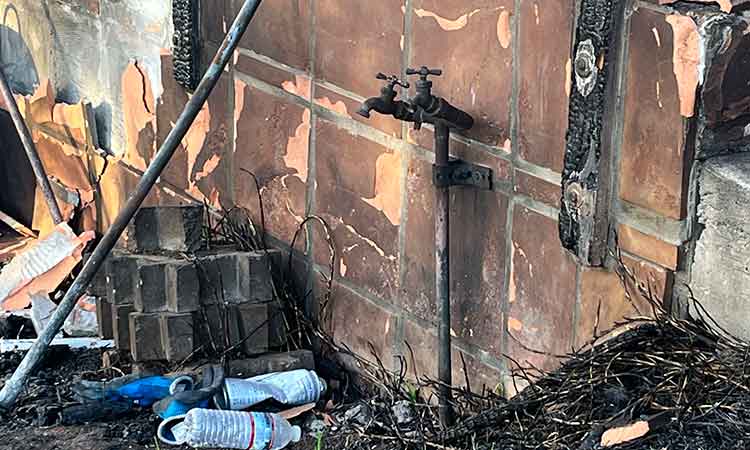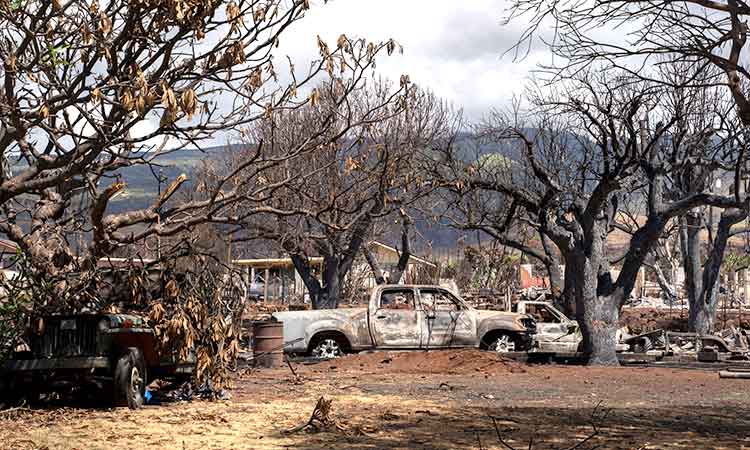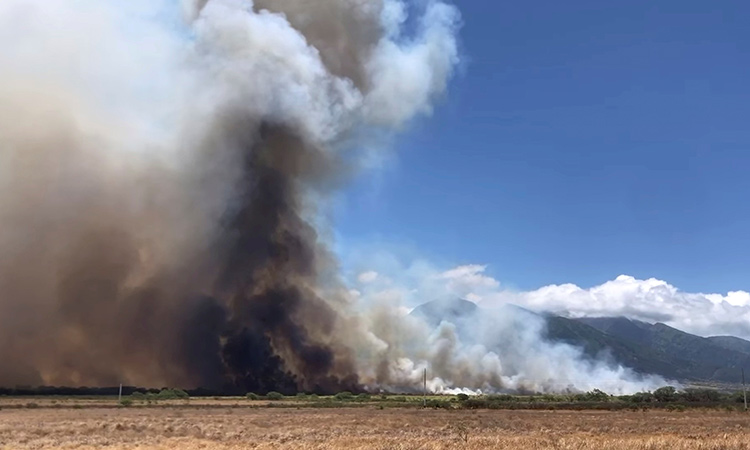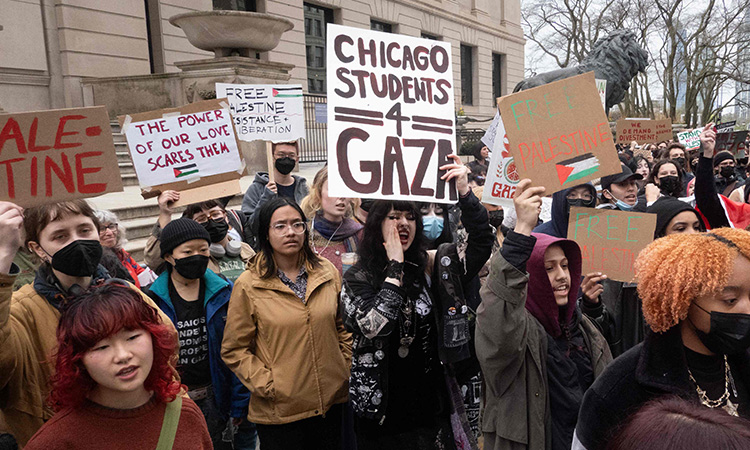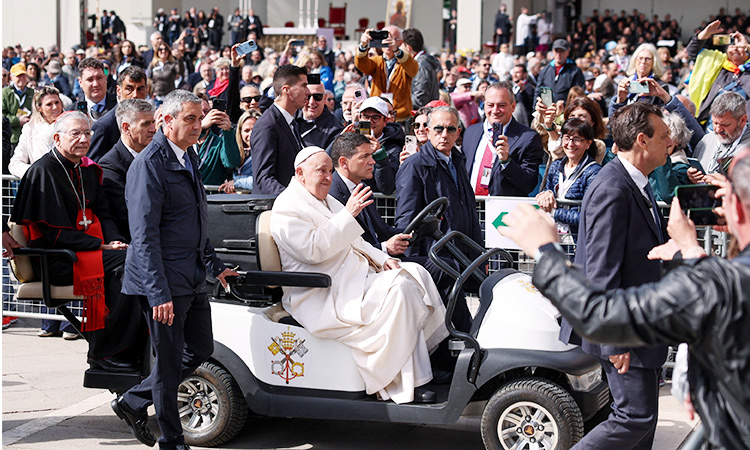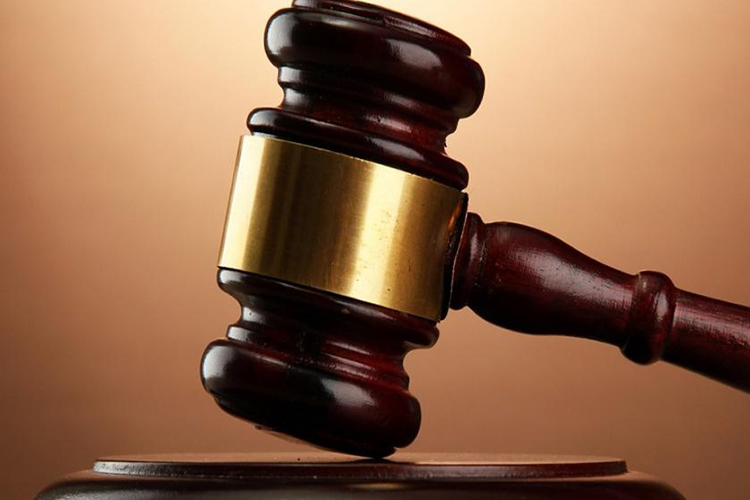Hawaii wildfires death toll reaches 80 as survivors return to communities in ruins
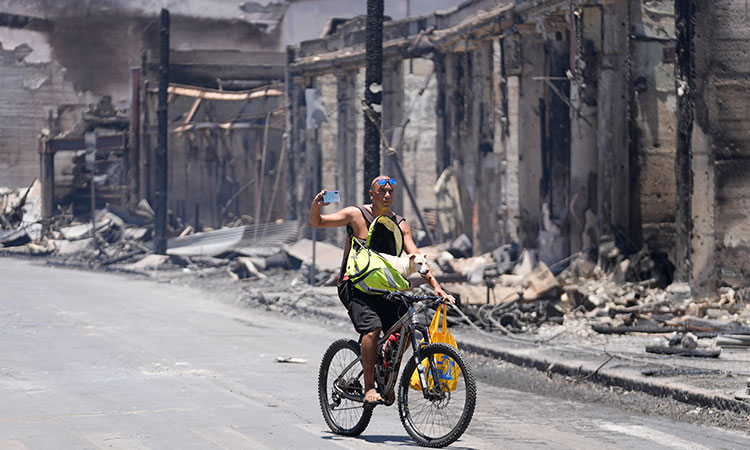
A man rides along Main Street past wildfire damage in Lahaina, Hawaii, on Friday. AP
Maui County raised the number of confirmed deaths to 80 in a 9:00 pm statement on Friday. Governor Josh Green had warned the death toll would likely rise as search and rescue operations continue. Authorities set a curfew from 10:00 pm until 6:00 am on Saturday.
"The recovery’s going to be extraordinarily complicated, but we do want people to get back to their homes and just do what they can to assess safely, because it’s pretty dangerous,” Green told Hawaii News Now.
Cadaver-sniffing dogs were deployed to search for the dead, Maui County Mayor Richard Bissen Jr. said.
Over 2,200 structures were damaged or destroyed in the fire, the Federal Emergency Management Agency (FEMA) said, estimating that it would cost some $5.5 billion to rebuild affected communities.
Hawaiian authorities said they were opening a probe into the handling of the fire as a congresswoman from the state acknowledged that officials had underestimated the dangers. In the historic resort city of Lahaina on the island of Maui, resident Anthony Garcia said the fire had gutted the apartment he was renting and destroyed all his belongings and memories.
"It took everything, everything! It's heartbreaking," the 80-year-old California native, who has lived in Lahaina for three decades, told AFP. "It's a lot to take in."
The town of some 13,000, once the proud home of the Hawaiian royal family, has been reduced to ruins, its lively hotels and restaurants turned to ashes.
A majestic banyan tree that has been the center of the community for 150 years has been scarred by the flames, but still stands upright, its branches denuded of green and its sooty trunk transformed into an awkward skeleton.
A new wildfire on Friday evening triggered the evacuation of Kaanapali in West Maui, a community northeast of the area that burned earlier, but crews were able to extinguish the fire before 8:30 pm, authorities said.
Attorney General Anne Lopez announced plans to conduct a comprehensive review of decision-making and standing policies impacting the response to the deadly wildfires.
"My Department is committed to understanding the decisions that were made before and during the wildfires and to sharing with the public the results of this review,” Lopez said in a statement.
The wildfires are the state’s deadliest natural disaster in decades, surpassing a 1960 tsunami that killed 61 people. An even deadlier tsunami in 1946, which killed more than 150 on the Big Island, prompted development of a territory-wide emergency system with sirens that are tested monthly.
Many fire survivors said they didn’t hear any sirens or receive a warning giving them enough time to prepare, realizing they were in danger only when they saw flames or heard explosions.
Hawaii emergency management records do not indicate warning sirens sounded before people had to run for their lives. Officials sent alerts to mobile phones, televisions and radio stations, but widespread power and cellular outages may have limited their reach.
Fuelled by a dry summer and strong winds from a passing hurricane, at least three wildfires erupted on Maui, racing through parched brush covering the island.
The most serious blaze swept into Lahaina on Tuesday and left a grid of gray rubble wedged between the blue ocean and lush green slopes.
Journalists found the devastation included nearly every building on Front Street, the heart of historic Lahaina and the economic hub of Maui.
There was an eerie traffic jam of charred cars that didn’t escape the inferno as surviving roosters meandered through the ashes. Skeletal remains of buildings bowed under roofs that pancaked in the blaze. Palm trees were torched, boats in the harbor were scorched and the stench of burning lingered.
Anthony Garcia assessed the devastation as he stood under Lahaina’s iconic banyan tree, now charred, and swept twisted branches into neat piles next to another heap filled with dead animals: cats, roosters and other birds killed by the smoke and flames. Somehow it made sense in a world turned upside-down.
"If I don’t do something, I’ll go nuts,” said Garcia, who lost everything he owned. "I’m losing my faith in God.”
Garcia and other residents were faced with catastrophic destruction resulting from the wildfires that tore through parts of Maui this week and were still not fully contained on Friday night.
"There was no warning," said Lynn Robinson, who lost her home. "It hit so quick, it was incredible,” Kyle Scharnhorst said as he surveyed his damaged apartment complex.
Summer and Gilles Gerling sought to salvage keepsakes from the ashes of their home. All they could find was the piggy bank Summer Gerling’s father gave her as a child, their daughter’s jade bracelet and watches they gifted each other for their wedding. Their wedding rings were gone.
They described their fear as the strong wind whipped the smoke and flames closer, but said they were happy to have made it out alive with their two children.
"Safety was the main concern. These are all material things,” Gilles Gerling said.
The wildfire is already projected to be the second-costliest disaster in Hawaii history, behind only Hurricane Iniki in 1992, according to disaster and risk modeling firm Karen Clark & Company.
The fire is the deadliest in the US since the 2018 Camp Fire in California, which killed at least 85 people and destroyed the town of Paradise.
The danger on Maui was well known. Maui County’s hazard mitigation plan updated in 2020 identified Lahaina and other West Maui communities as having frequent wildfires and several buildings at risk.
The report also noted West Maui had the island’s second-highest rate of households without a vehicle and the highest rate of non-English speakers.
"This may limit the population’s ability to receive, understand and take expedient action during hazard events,” the plan stated.
Associated Press
